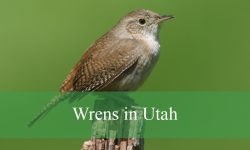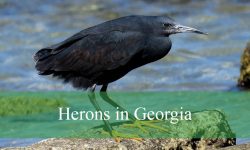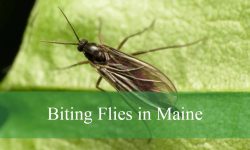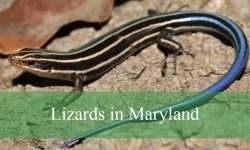Are you curious about the fascinating world of animals that start with A? If you’re a nature enthusiast, a student, or someone who simply enjoys learning about wildlife, this list will introduce you to an amazing variety of species. From the well-known alligator to the elusive aardvark, the animal kingdom is full of surprises—especially when we focus on names beginning with the very first letter of the alphabet.
This guide features 54 animals that start with A, each one highlighted with names and pictures to make learning both fun and visually engaging. You’ll encounter mammals, birds, reptiles, amphibians, insects, and sea creatures—all connected by a single letter, yet incredibly diverse in their traits and habitats.
As an animal lover, exploring the richness of life through something as simple as the letter A is both exciting and rewarding. Some of these animals that start with A are instantly recognizable, while others are rare and curious. Either way, you’re about to discover just how wide and wonderful the A-side of the animal kingdom can be!
List of Animals That Start with the Letter A
Aardvark
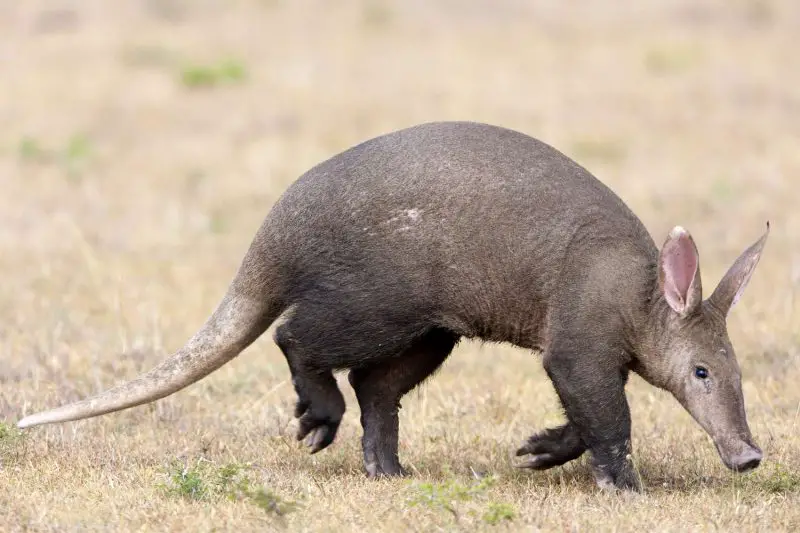
The aardvark is a nocturnal mammal native to sub-Saharan Africa, recognized for its long snout and tubular ears. Its body is stocky and covered in sparse, coarse hair, while its claws are strong and shovel-like, ideal for digging. Aardvarks have poor eyesight but an excellent sense of smell, which they use to locate food underground.
These creatures are found in savannas, grasslands, woodlands, and even arid regions, provided the soil is soft enough for digging and termites are abundant. They create extensive burrows that offer shelter from predators and the heat of the day. Some burrows are reused by other animals once the aardvark abandons them.
Aardvarks primarily feed on ants and termites, using their long, sticky tongue to slurp up thousands of insects in one night. A fun fact about aardvarks is that their name comes from the Afrikaans word meaning “earth pig,” although they are not related to pigs at all.
Aardwolf
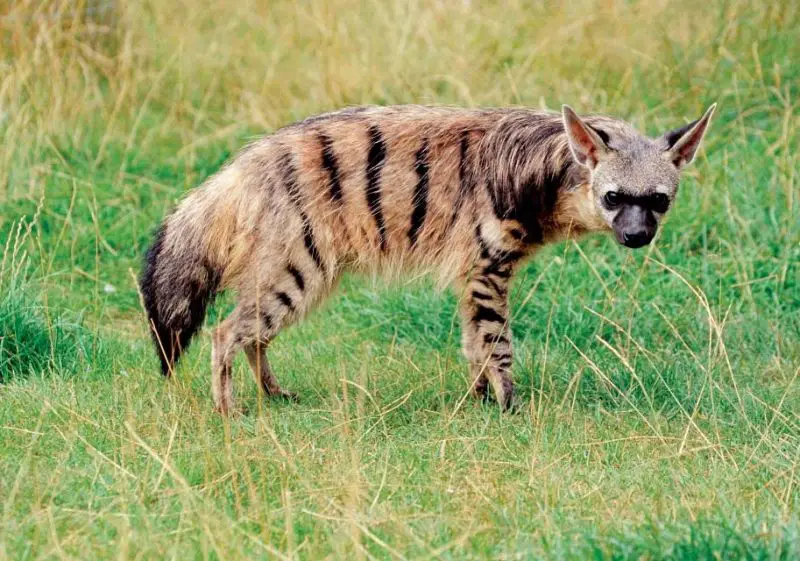
The aardwolf is a small, insectivorous mammal belonging to the hyena family and is native to Eastern and Southern Africa. Despite its hyena-like appearance, it is not a scavenger and has a slender body, large ears, and a mane of hair that runs down its back, which it raises when threatened.
Aardwolves inhabit open grasslands and savannas where termites, their primary food source, are abundant. They avoid densely forested or overly dry regions. These animals are solitary and strictly nocturnal, often retreating into underground burrows during the day.
Unlike other hyenas, aardwolves have specialized teeth that allow them to lap up termites without damaging the nests. Remarkably, a single aardwolf can consume up to 300,000 termites in one night. An interesting fact is that aardwolves mark their territory using scent from their anal glands, a behavior more commonly associated with cats than hyenas.
Abyssinian Cat
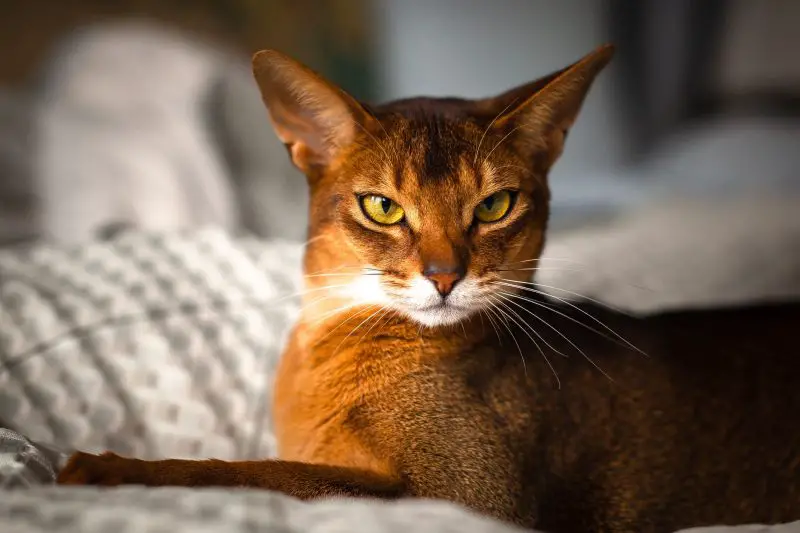
The Abyssinian cat is one of the oldest and most elegant domesticated cat breeds, known for its short, ticked coat that shimmers with a copper or ruddy hue. It has a slim, athletic build with large almond-shaped eyes and oversized ears, giving it a very alert and regal appearance.
This breed is thought to have originated in Egypt or Ethiopia, though modern Abyssinians were developed primarily in Britain. Abyssinians adapt well to indoor living and are highly sociable pets that thrive on attention and mental stimulation. They are also excellent climbers and prefer perches or cat trees to observe their surroundings.
Abyssinians are curious, intelligent, and energetic cats that love interactive play. Unlike many breeds, they are relatively quiet but very expressive through body language. A fun fact: the Abyssinian’s coat has a unique “agouti” pattern, where each hair is banded with multiple colors, giving it a warm, glowing appearance.
Addax
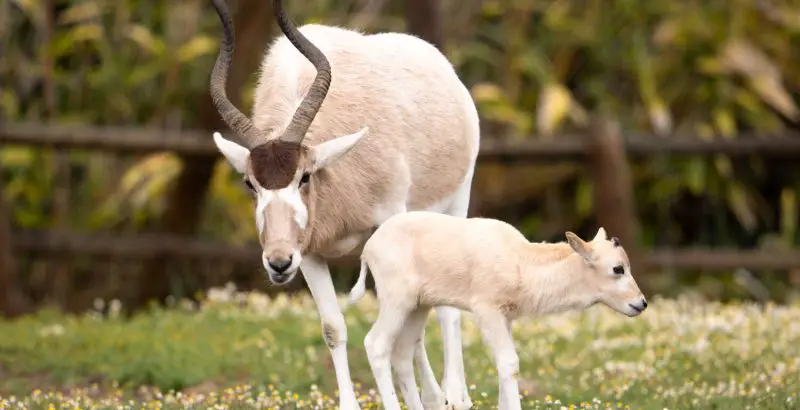
The addax, also known as the white antelope or screwhorn antelope, is a desert-dwelling species native to the Sahara Desert. It has long, twisted horns and a pale coat that helps reflect sunlight, while its broad hooves are adapted for walking on sand. During cooler months, its coat darkens slightly.
Addaxes are superbly adapted to extreme desert conditions and can survive without direct water sources, extracting moisture from the vegetation they consume. They are nomadic, wandering in small groups in search of sparse grasses and shrubs. Once widespread across the Sahara, they are now critically endangered due to overhunting and habitat loss.
They feed mainly on desert grasses, herbs, and leaves, especially those with high water content. A fascinating fact about the addax is that it can go several months without drinking water, relying solely on its food for hydration.
Adelie Penguin

The Adelie penguin is a small, hardy penguin species native to Antarctica, instantly recognizable by its tuxedo-like plumage and distinctive white ring around each eye. It has a robust body, flipper-like wings for swimming, and a short, wedge-shaped tail.
Adelie penguins inhabit the Antarctic coastline and breed on rocky, ice-free beaches where they build nests from stones. During the harsh Antarctic winter, they migrate northward following the advancing ice edge. They are social animals and form large colonies that can number in the thousands.
Their diet consists mainly of krill, fish, and squid, which they catch during deep dives in icy waters. A fun fact about Adelie penguins is their pebble-gathering behavior—males often present the finest pebbles to females as a form of courtship, leading to fierce competition over the best stones.
Afghan Hound

The Afghan Hound is a graceful and aristocratic dog breed known for its long, silky coat and proud carriage. It has a narrow face, long ears, and a lean, athletic build that allows it to move with speed and elegance. Originally bred for hunting in the mountains of Afghanistan, it is built for endurance and agility.
These dogs were historically used by nomadic tribes to chase prey over rugged terrain. They are independent and aloof by nature but can be very loyal and affectionate to their owners. Afghan Hounds thrive in spacious environments and benefit from regular exercise and grooming due to their high-maintenance coat.
Afghan Hounds are sight hounds, meaning they rely on their excellent vision rather than scent for hunting. A fun fact: their thick coat is not just for beauty—it provided protection from cold mountain winds during hunts in their native region.
African Buffalo
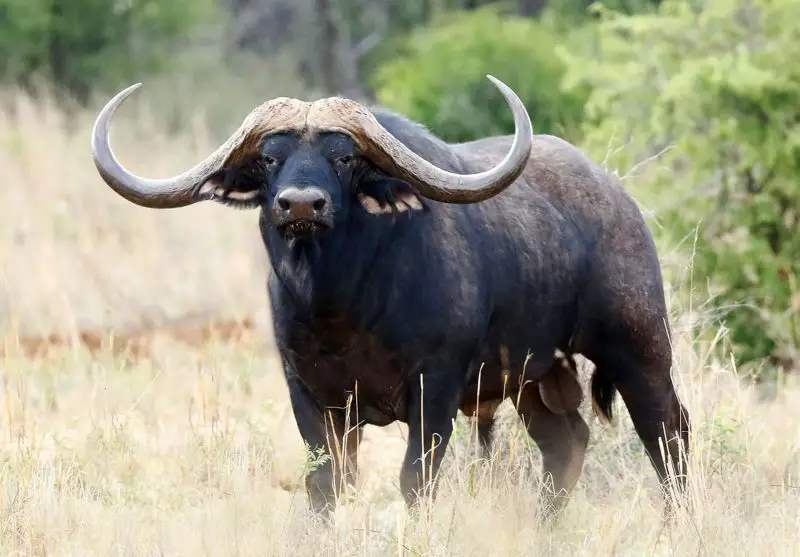
The African Buffalo, also known as Cape Buffalo, is one of the most formidable and dangerous animals in Africa. It has a stocky body, thick curved horns, and a reputation for being both powerful and unpredictable. These animals can weigh up to 1,500 pounds and are capable of defending themselves against large predators.
They inhabit savannas, swamps, and forests across sub-Saharan Africa and are commonly found near water sources. African Buffaloes are highly social and live in large herds, which provide protection and enhance their survival against lions and other threats.
Their diet consists mainly of grass and other vegetation, which they consume in large quantities. A surprising fact: despite their cattle-like appearance, African Buffaloes have never been domesticated due to their aggressive nature and unpredictability.
African Bush Elephant
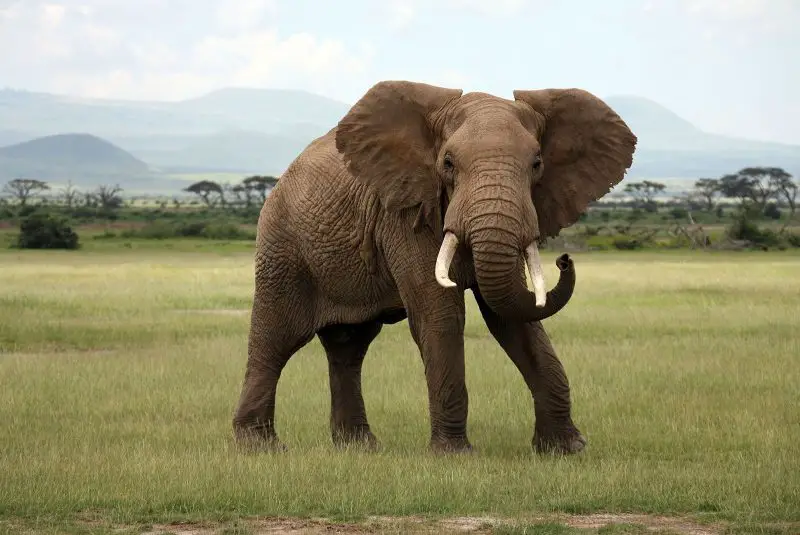
The African Bush Elephant is the largest land animal on Earth, with adult males weighing up to 13,000 pounds. It has large, flapping ears shaped like the African continent, a long trunk for grabbing food and water, and prominent curved tusks used for digging and defense.
These elephants roam the savannas, grasslands, and woodlands of sub-Saharan Africa. They travel in matriarchal herds, led by the oldest female, and have strong social bonds. Elephants are known for their intelligence, memory, and complex emotions, including grief and empathy.
They are herbivores that feed on grasses, leaves, bark, and fruit, often uprooting entire trees in the process. A fun fact: an elephant’s trunk has over 40,000 muscles, making it one of the most versatile and sensitive appendages in the animal kingdom.
African Civet
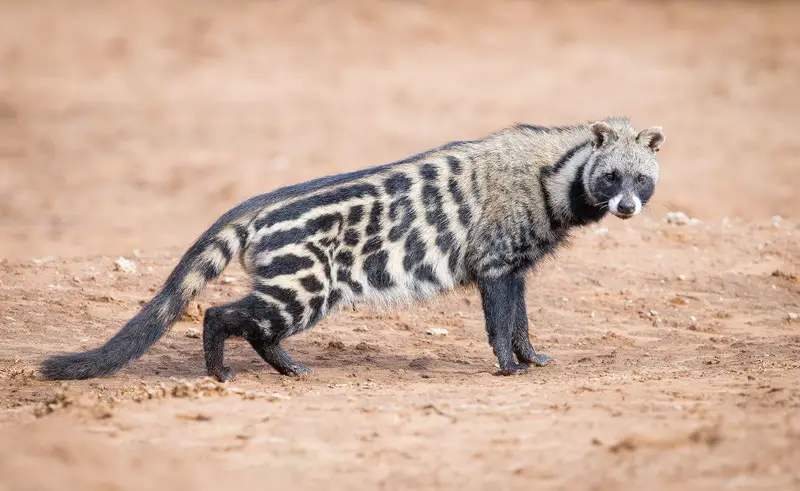
The African Civet is a nocturnal mammal known for its spotted coat and the strong musk it produces, which was once a valuable ingredient in perfumes. It has a cat-like appearance, with a long body, short legs, and a black-and-white facial mask that gives it a raccoon-like look.
Civets are found throughout sub-Saharan Africa in forests, savannas, and even urban areas where food is abundant. They are solitary animals that come out at night to hunt and explore. During the day, they rest in dense vegetation or burrows.
Their omnivorous diet includes fruits, insects, small mammals, and carrion. A curious fact: the secretion from their scent glands, called civetone, has historically been harvested for high-end perfumes, though synthetic alternatives are now widely used.
African Clawed Frog
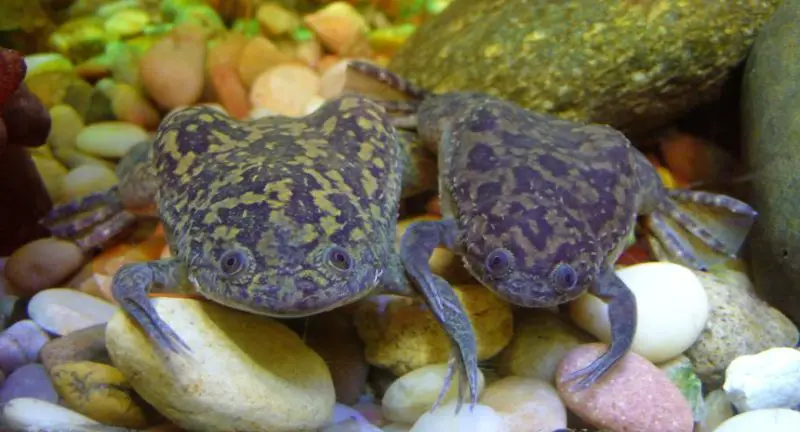
The African Clawed Frog is an aquatic amphibian easily recognized by its flattened body, clawed toes on its hind legs, and smooth, slippery skin. It is usually gray or olive in color, with a white belly and no tongue or teeth—adaptations that suit its underwater lifestyle.
These frogs are native to sub-Saharan Africa and are typically found in ponds, lakes, and slow-moving streams. They are highly adaptable and can survive in both permanent and temporary water bodies. When conditions dry up, they can burrow into mud and go dormant until rain returns.
They feed on small aquatic creatures, including insects, worms, and other amphibians. A fascinating fact: African Clawed Frogs were once used in human pregnancy tests during the 20th century, as injecting them with a pregnant woman’s urine would induce egg-laying.
African Forest Elephant
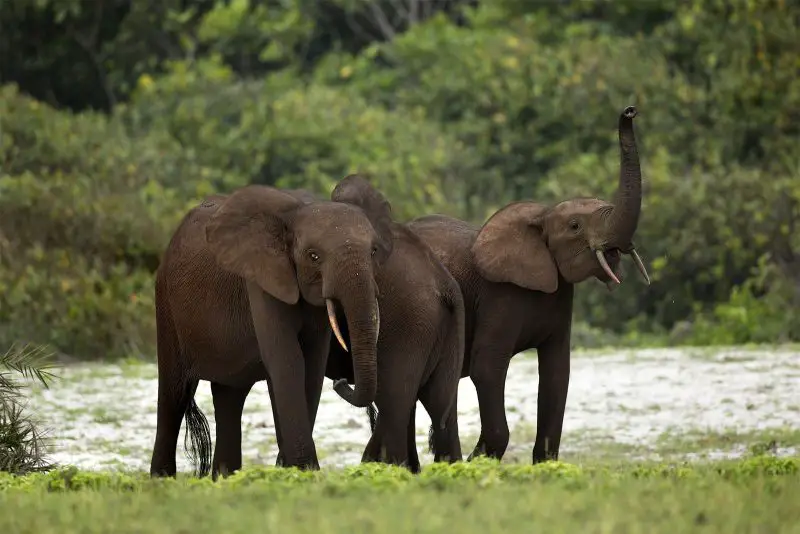
The African Forest Elephant is a smaller and more elusive cousin of the African Bush Elephant. It has straighter tusks, rounder ears, and a more compact body, adaptations that help it navigate dense tropical forests. Its skin tends to be slightly darker, and it is typically more difficult to spot in the wild due to its secretive behavior.
This species inhabits the rainforests of Central and West Africa, where it plays a crucial ecological role as a “mega-gardener.” By dispersing seeds and clearing vegetation through foraging, it helps maintain the forest ecosystem. Unlike its savanna relatives, the forest elephant is more solitary or found in smaller family groups.
Their diet consists mainly of fruits, bark, leaves, and roots. A striking fact: forest elephants are vital for the survival of certain tree species, as some seeds only germinate after passing through the elephant’s digestive system.
African Grey Parrot
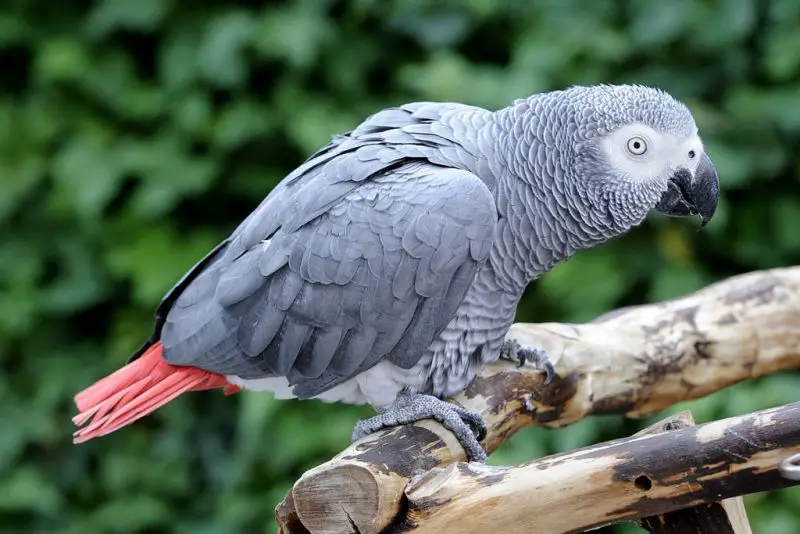
The African Grey Parrot is widely regarded as one of the most intelligent bird species in the world. It has a sleek silver-gray body, a bright red tail, and a black beak. This parrot is renowned for its exceptional ability to mimic human speech and understand simple concepts.
Native to the rainforests of West and Central Africa, African Grey Parrots prefer dense canopy environments. In the wild, they form large flocks and communicate through a variety of calls and whistles. They are highly social and form strong bonds with their mates or human caretakers in captivity.
Their diet includes seeds, nuts, fruits, and leafy matter. A fun fact: some African Greys have demonstrated cognitive abilities on par with a young child, including problem-solving, counting, and even using words in context.
African Lion

The African Lion is a symbol of strength and majesty, recognized for its muscular build, golden coat, and, in males, a distinctive mane that can vary in color and size. Lions are the only truly social cats, living in structured prides made up of females, cubs, and a few dominant males.
They inhabit savannas, grasslands, and open woodlands across sub-Saharan Africa, where they rest for much of the day and hunt primarily at night or during cool hours. Lions are apex predators that work in groups to take down large prey such as wildebeest, zebras, and buffalo.
Their diet consists exclusively of meat, and they can consume up to 75 pounds in a single meal. A fun fact: lion roars can be heard up to five miles away and serve to mark territory and communicate with pride members.
African Wild Dog
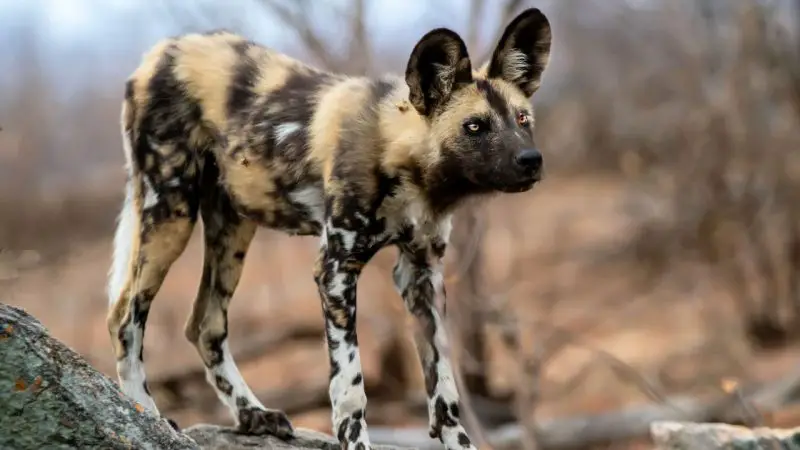
The African Wild Dog, also known as the painted wolf, is a highly social and endangered canid species. It is easily identified by its patchy coat of black, brown, white, and yellow fur, large rounded ears, and lean frame built for stamina and speed.
These animals inhabit savannas, grasslands, and lightly wooded areas across Africa, particularly in Southern and Eastern regions. They live and hunt in tightly knit packs, often led by an alpha pair, and show extraordinary cooperation when caring for young and injured members.
African Wild Dogs primarily hunt antelope and other medium-sized herbivores, relying on endurance and teamwork. A fascinating fact: their hunting success rate is among the highest of any predator, with coordinated strategies and almost military precision in their chases.
Agama Lizard
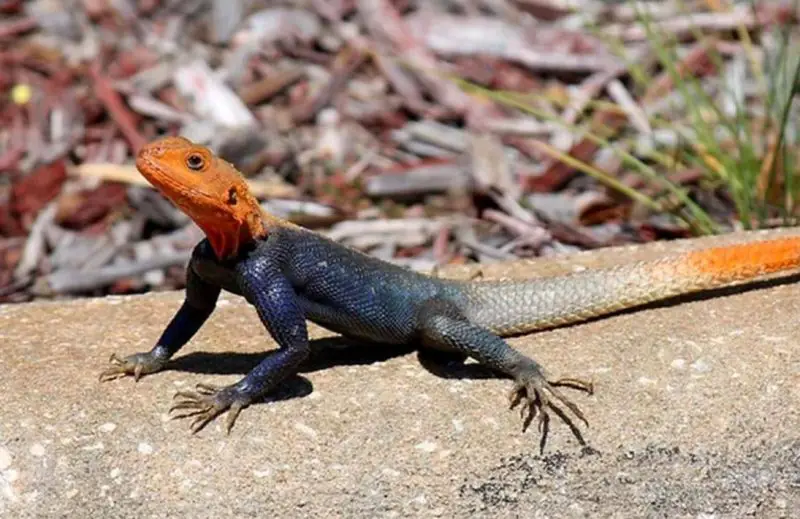
The Agama Lizard is a striking reptile known for its vibrant coloration, particularly in males during the breeding season. The most famous variety, the red-headed rock agama, sports a vivid red or orange head with a deep blue body. Its slender limbs and long tail aid in agile movements across rocks and walls.
Agamas are found throughout sub-Saharan Africa in arid and semi-arid regions, including savannas, rocky outcrops, and even urban environments. They are diurnal, basking in the sun during the day and retreating to crevices at night.
These lizards feed on insects, spiders, and occasionally plants. A fun fact: male agamas perform head-bobbing and push-up displays to assert dominance or attract females, often drawing comparisons to cartoon superheroes like Spider-Man due to their climbing skills and colors.
Airedale Terrier

The Airedale Terrier is the largest of all terrier breeds, often referred to as the “King of Terriers.” It has a distinctive wiry coat, usually tan with a black saddle, and a long, flat head with a dignified expression. This breed is both intelligent and energetic, originally developed for hunting otters and small game in England’s Aire Valley.
Airedales are versatile and have been used in various roles, including as police dogs, military messengers, and family companions. They are confident, independent, and known for their playful spirit. With proper training and socialization, they make loyal and protective pets.
They require regular grooming to maintain their coat and plenty of exercise to satisfy their active minds. A fun fact: during World War I, Airedales served as wartime couriers and were praised for their courage and reliability under fire.
Akbash

The Akbash is a large, white livestock guardian dog from Turkey, bred to protect sheep from predators such as wolves and bears. It has a muscular body, a broad head, and a thick, weather-resistant coat that helps it blend in with flocks. This breed is both calm and alert, making it an exceptional guardian.
Native to the mountainous regions and open plains of western Turkey, the Akbash has been used for centuries by shepherds. It is highly independent and can make decisions on its own while still forming strong bonds with its human and animal companions.
Its protective instincts are strong, but it is generally not aggressive unless provoked or sensing danger. A fun fact: the Akbash often works in silence, preferring a stealthy approach to guarding rather than barking excessively like other guard dogs.
Akita

The Akita is a powerful and dignified dog breed originating from Japan, known for its strength, loyalty, and noble demeanor. It has a dense double coat, a curled tail, and a broad head with small, upright ears. Akitas are calm and reserved, especially around strangers, but deeply devoted to their families.
This breed was originally used for guarding royalty and hunting large game such as boar and bears. Akitas thrive in cooler climates and require early socialization and training to ensure they develop into well-mannered companions.
Their diet should be carefully managed due to their tendency to gain weight and suffer from certain genetic health issues. A famous Akita named Hachikō became a symbol of loyalty in Japan for waiting at a train station daily for his deceased owner for over nine years.
Albatross
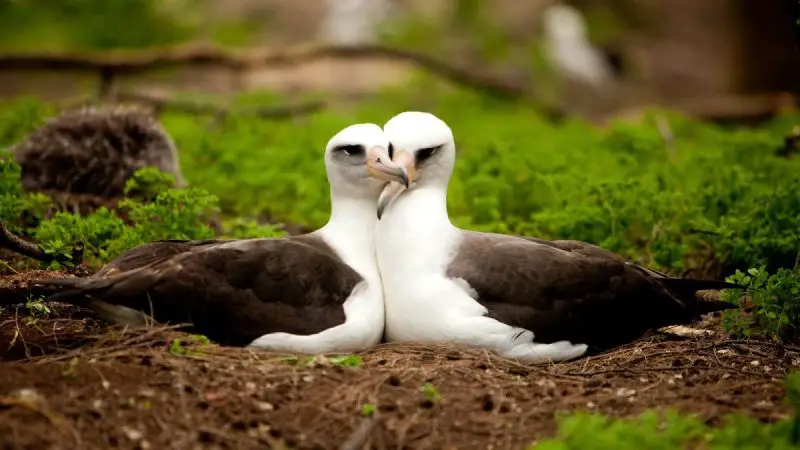
The Albatross is a magnificent seabird known for having one of the longest wingspans of any bird species—reaching up to 11 feet in some cases. Its large, hooked beak and long, slender wings make it perfectly adapted for dynamic soaring over the ocean.
These birds inhabit the Southern Ocean and North Pacific, spending most of their lives flying over open water. They come to land only to breed, often returning to the same nesting grounds and even the same partner year after year in elaborate courtship dances.
Albatrosses feed on squid, fish, and krill, often scavenging or following fishing vessels. A fascinating fact: they can sleep while gliding through the air and have been known to travel thousands of miles without flapping their wings.
Aldabra Giant Tortoise

The Aldabra Giant Tortoise is one of the largest tortoise species in the world, with some individuals weighing over 500 pounds. It has a massive domed shell, thick legs, and a long neck that helps it reach high vegetation. Its slow, lumbering movement adds to its ancient and majestic appearance.
This tortoise is native to the Aldabra Atoll in the Seychelles, where it roams freely across grasslands and coastal scrub. It is a herbivore, feeding on grasses, leaves, and occasionally fallen fruits. Its long lifespan, often exceeding 100 years, makes it a living relic of prehistoric times.
They play an essential ecological role by dispersing seeds and maintaining plant growth. A fun fact: one Aldabra tortoise named Adwaita was reported to have lived for over 250 years, making it one of the longest-lived animals ever recorded.
Alligator

The alligator is a large reptile distinguished by its broad, U-shaped snout and armored body. Unlike crocodiles, alligators have a more rounded jaw and their upper teeth are visible when the mouth is closed. They can grow up to 15 feet in length and are known for their strong bite force and stealthy movements.
Alligators are primarily found in freshwater wetlands, rivers, and swamps in the southeastern United States and parts of China. They are cold-blooded and spend much of their time basking in the sun or lurking beneath the water’s surface. As opportunistic carnivores, they feed on fish, birds, amphibians, and mammals.
Despite their fearsome appearance, they play a crucial role in their ecosystems, such as maintaining open water areas in marshes. A fun fact: the eyes of an alligator glow red-orange at night when illuminated, due to a layer behind the retina called the tapetum lucidum that enhances night vision.
Alpaca
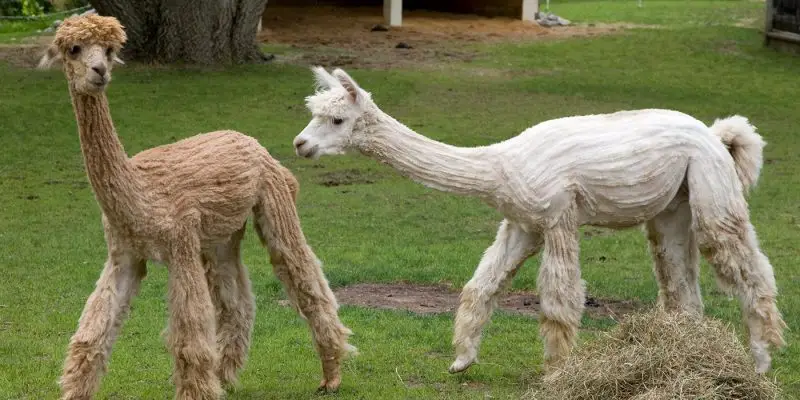
The alpaca is a domesticated South American animal closely related to the llama, prized for its incredibly soft and warm wool. It has a slender neck, large expressive eyes, and a thick, fluffy coat that comes in over 20 natural colors. Alpacas are gentle, social animals often kept in herds.
They are native to the Andes Mountains of Peru, Bolivia, Ecuador, and Chile, and have adapted well to high-altitude environments. Their fleece is sheared once a year and is used to produce premium textiles due to its hypoallergenic properties and fine texture.
Alpacas graze on grasses and are highly efficient at digesting tough vegetation. A fun fact: alpacas hum softly to communicate with each other, and they often greet companions by gently touching noses.
Amazon River Dolphin

The Amazon River Dolphin, also known as the pink river dolphin or boto, is one of the few freshwater dolphin species in the world. It has a long, slender beak, flexible neck, and a body that turns pinker with age. These dolphins can reach lengths of up to 8 feet and are extremely intelligent.
They inhabit the river systems of the Amazon and Orinoco basins, navigating murky waters with the help of echolocation. They are well adapted to their environment, able to maneuver around tree roots and submerged obstacles in flooded forests during rainy seasons.
Their diet consists of fish, crabs, and even small turtles. A fun fact: according to Amazonian folklore, these dolphins can transform into handsome men to seduce women during local festivals.
Ambrosia Beetle

Ambrosia beetles are small, wood-boring insects known for their unique relationship with symbiotic fungi. Instead of feeding on wood directly, they cultivate special fungal gardens in their tunnels and feed on the spores. They range from 2 to 8 millimeters in length and are typically brown or black.
These beetles inhabit dead or stressed trees, and some species have become serious pests by attacking healthy trees and spreading tree-killing fungi. Found worldwide, they are especially prevalent in temperate and tropical forests, with many species introduced through global trade.
The tunnels and galleries they create can be seen in infested wood, often stained by fungal growth. A fun fact: ambrosia beetles “farm” their fungal crops in a way that resembles a form of insect agriculture, much like leaf-cutter ants or termites.
American Alligator
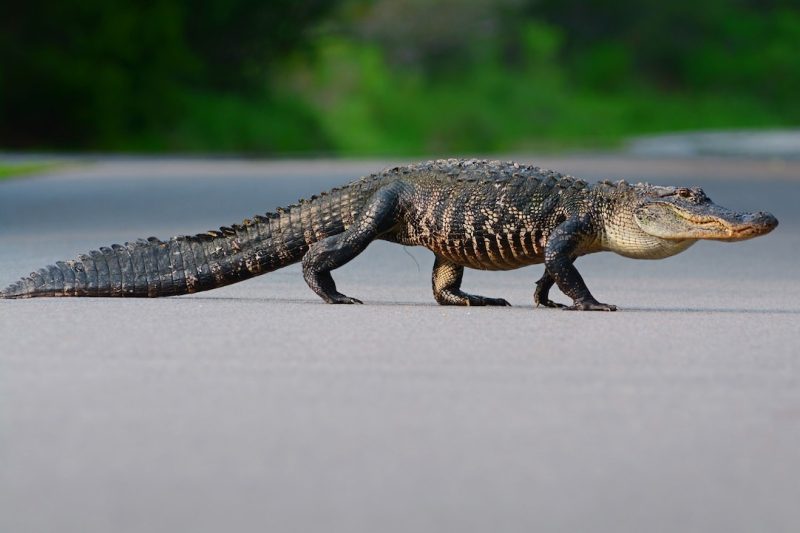
The American Alligator is the largest reptile in North America and can grow over 13 feet long. It has a broad, rounded snout, dark green to black skin, and powerful jaws. Males are typically larger than females, and both are capable swimmers and strong walkers on land.
They are found in the southeastern United States, particularly in Florida and Louisiana, living in freshwater environments such as swamps, marshes, rivers, and lakes. As apex predators, they play an important ecological role in controlling populations of prey species and maintaining balance in their habitats.
Their diet includes fish, turtles, birds, and mammals, and juveniles may eat insects and small amphibians. A fun fact: American alligators use a low bellowing roar to communicate, especially during mating season, and their bellow is so powerful it causes the water around them to ripple visibly.
American Bison
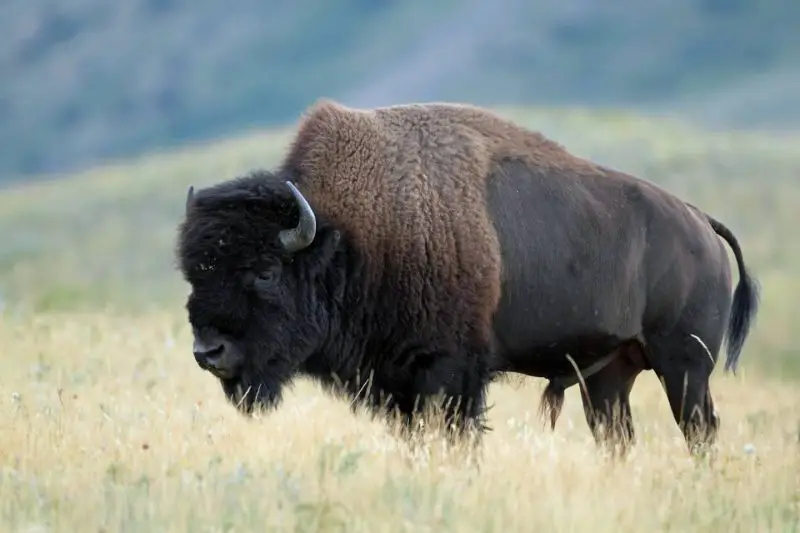
The American Bison, often referred to as the buffalo, is the largest land mammal in North America. It is characterized by a massive head, a hump over its shoulders, and thick, shaggy fur that helps it endure harsh winters. Males can weigh up to 2,000 pounds, and both sexes have short, curved horns.
Historically, bison roamed the Great Plains in enormous herds, shaping the grassland ecosystems and playing a central role in Native American cultures. Today, they are mostly found in protected areas and national parks like Yellowstone. These herbivores graze on grasses and sedges and can survive on sparse forage.
Despite once being nearly driven to extinction, conservation efforts have helped bison populations rebound. A fun fact: bison can run at speeds of up to 35 miles per hour and are surprisingly agile for their size.
American Bulldog

The American Bulldog is a muscular, sturdy breed originally developed to work on farms and guard livestock. It has a broad head, strong jaw, and a confident, alert expression. Its short coat comes in a variety of colors, commonly white with patches of brown, brindle, or red.
This breed originated in the southeastern United States and is known for its strength, loyalty, and courage. American Bulldogs thrive in active households and benefit from regular training and socialization. They are often used today as family companions, working dogs, and in protection sports.
American Bulldogs are omnivorous and require a high-protein diet to support their energy needs. A fun fact: despite their tough appearance, many American Bulldogs are affectionate and gentle with children when properly raised.
American Cocker Spaniel

The American Cocker Spaniel is a small to medium-sized dog known for its long, silky ears and expressive eyes. It has a soft, wavy coat that comes in various colors including buff, black, and parti-color. This breed has a compact body and a cheerful, eager-to-please temperament.
Originally bred as a hunting dog for flushing game birds, it has become a beloved family pet due to its friendly nature and adaptability. The American version is smaller and more refined than the English Cocker Spaniel, with a domed head and a more profuse coat.
Cocker Spaniels need regular grooming and enjoy interactive play and gentle training. A fun fact: this breed rose to fame in the mid-20th century and was the most popular dog in America for several years running.
American Foxhound

The American Foxhound is a tall, lean, and athletic breed developed for hunting foxes by scent. It has long legs, a deep chest, and a short, hard coat that typically comes in tricolor or bicolor combinations. Its long, drooping ears and strong nose are trademarks of the breed.
Originating from Virginia and Maryland in the 1700s, this hound was selectively bred from English and French hunting dogs. It is known for its endurance and musical baying voice, which hunters use to track its location during a chase. Though bred for the field, it can also adapt to home life with proper exercise.
American Foxhounds are pack animals and do well with other dogs. A fun fact: George Washington is credited with helping to develop the breed and kept his own pack of foxhounds at Mount Vernon.
American Pit Bull Terrier

The American Pit Bull Terrier is a strong, medium-sized dog with a muscular build and a short, glossy coat. It has a broad head, powerful jaws, and a confident, friendly expression. Despite its reputation, this breed is known for loyalty and affection when properly trained.
Originally bred in the United States for bull-baiting and later as farm dogs, pit bulls are intelligent and highly trainable. They require firm, consistent leadership and thrive in active households. Early socialization is key to ensuring a balanced temperament.
Their diet typically includes high-protein food to support muscle mass and energy. A fun fact: American Pit Bull Terriers were once known as “nanny dogs” due to their strong bonds with children and protective instincts.
American Robin
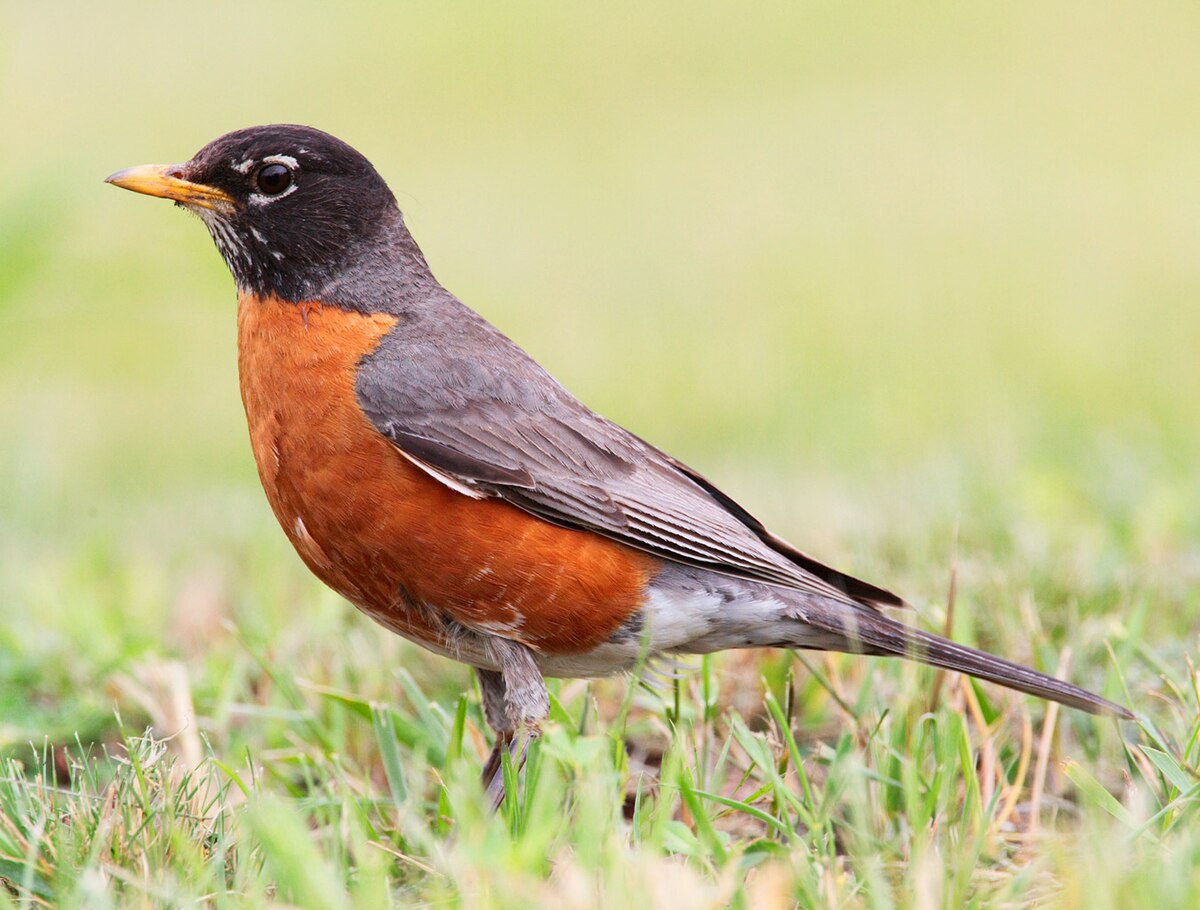
The American Robin is a familiar songbird recognized by its bright orange-red breast, grayish-brown back, and cheerful melody. It is a medium-sized thrush with a rounded body, long legs, and a yellow beak. Males and females look similar, though males often display slightly bolder coloring.
This bird is widely distributed across North America, from Alaska to Mexico. American Robins are often seen in backyards, parks, and woodlands, especially during the spring and summer breeding seasons. They build cup-shaped nests in trees and feed primarily on earthworms, insects, and berries.
American Robins are one of the first signs of spring, known for their early return northward after winter. A fun fact: despite their popularity in North America, they are not closely related to the European robin, which shares a similar name and red chest.
American Toad
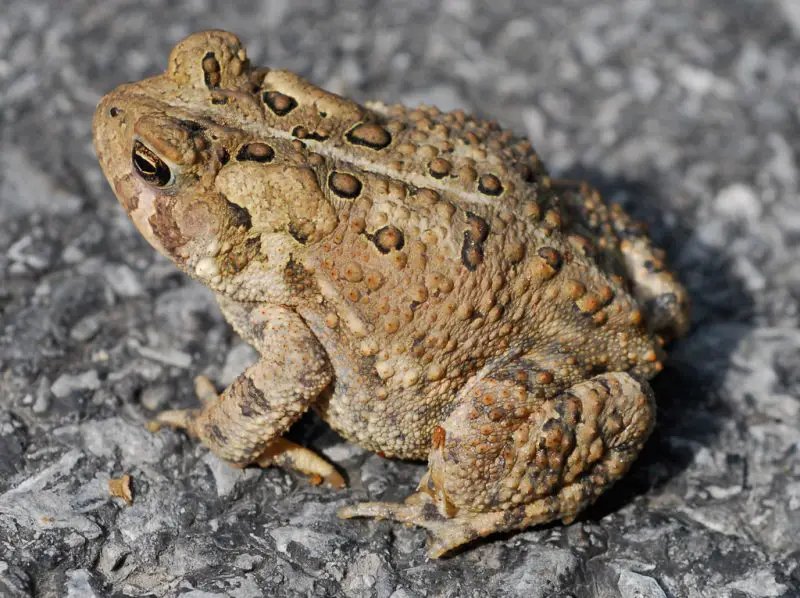
The American Toad is a common amphibian found throughout much of eastern North America. It has rough, bumpy skin that ranges in color from brown to gray or olive, often speckled with darker spots. A key identifying feature is the presence of one or two large warts within each dark spot on its back.
These toads inhabit forests, fields, gardens, and wetlands. They are most active at night and are frequently seen after rainstorms. American Toads lay long strings of eggs in shallow water, where the tadpoles eventually hatch and develop into adult toads.
They primarily feed on insects, worms, and other small invertebrates. A fun fact: American Toads can secrete a mild toxin from their skin glands that deters predators, though it’s harmless to humans unless ingested.
Amphiuma
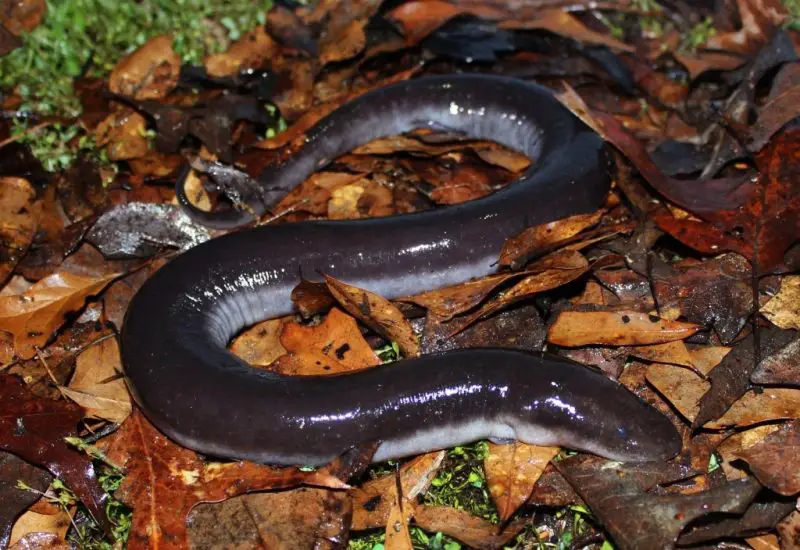
The Amphiuma is a unique aquatic amphibian that resembles an eel due to its elongated, cylindrical body and small, vestigial limbs. It can grow over three feet long, making it one of the longest amphibians in North America. Despite its snake-like appearance, it breathes through lungs and has a long lateral line for detecting vibrations in water.
These animals are native to the southeastern United States, typically found in slow-moving or stagnant waters like swamps, ditches, and bayous. Amphiumas are nocturnal and remain hidden under mud or vegetation during the day. They are carnivorous, feeding on fish, insects, snails, and even small amphibians.
Amphiumas are fascinating for their ability to survive droughts by burrowing into mud and entering a state of dormancy. A fun fact: though they have tiny limbs, Amphiumas can be surprisingly fast swimmers when startled.
Anaconda
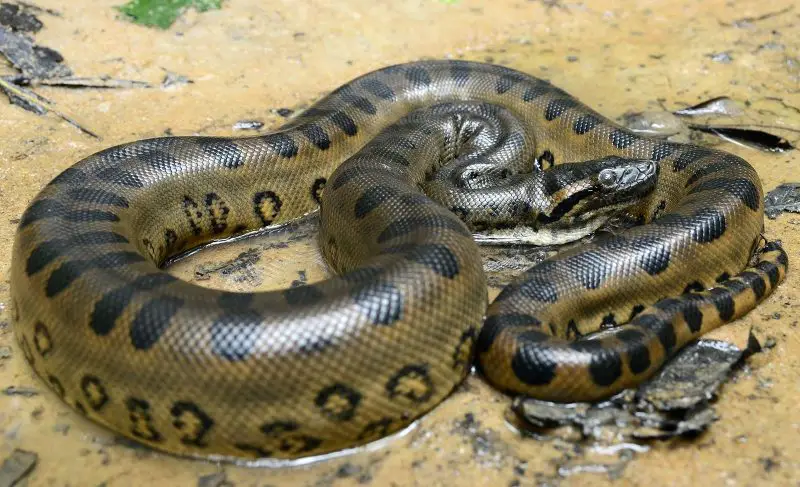
Anacondas are among the largest and heaviest snakes in the world, with the Green Anaconda being the most famous and massive of the group. They have muscular bodies, olive-green skin patterned with dark oval spots, and eyes and nostrils located on top of the head, perfect for staying submerged while stalking prey.
These snakes inhabit the swamps, marshes, and slow-moving rivers of the Amazon and Orinoco basins in South America. They are non-venomous constrictors, meaning they wrap around and suffocate their prey, which can include fish, birds, mammals, and even caimans.
Anacondas are powerful and elusive, often hunting at night. A fun fact: female anacondas are significantly larger than males and can give birth to live young—sometimes over 20 at a time—instead of laying eggs.
Anatolian Shepherd Dog
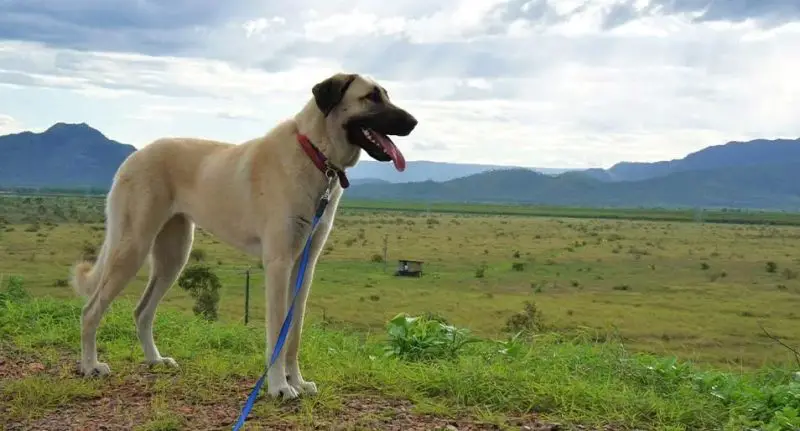
The Anatolian Shepherd Dog is a large, powerful breed originally developed in Turkey for guarding livestock against predators. It has a dense double coat that ranges in color from fawn to brindle, often with a black mask. This breed has a broad head, muscular body, and an alert, watchful demeanor.
These dogs are highly independent and intelligent, traits that stem from centuries of working alone to protect sheep and goats from wolves and other threats. Anatolian Shepherds are best suited to rural or spacious environments where they can patrol and exercise freely.
Their diet should be high in protein to support their active lifestyle. A fun fact: Anatolian Shepherds are still widely used as guardian dogs in Turkey and have been introduced to other countries, including Namibia, to protect livestock from cheetahs and reduce human-wildlife conflict.
Anchovy
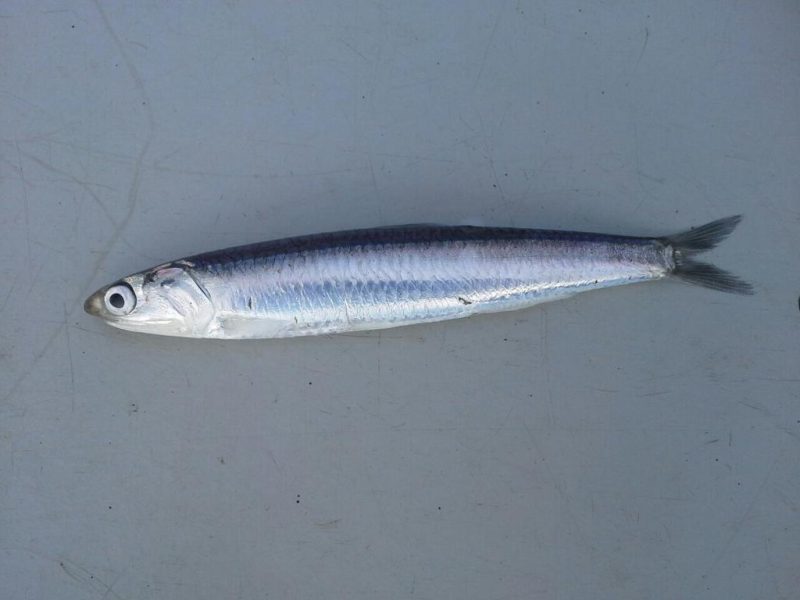
Anchovies are small, slender, silver-colored fish known for swimming in large schools. They typically grow up to 5–8 inches long and have a distinctive snout with a slightly protruding lower jaw. Their bodies are streamlined and built for fast, synchronized swimming.
These fish are found in temperate marine waters worldwide, especially in coastal areas such as the Mediterranean Sea, the eastern Pacific, and the Atlantic Ocean. They usually inhabit the upper layers of the ocean, though they may dive deeper during the day and rise toward the surface at night.
Anchovies feed on plankton, small crustaceans, and fish larvae by filter-feeding with their gill rakers. A fun fact: despite their strong, salty flavor when preserved, fresh anchovies are mild and are a staple in many cuisines, including pizza toppings and Caesar salad dressing.
Andean Condor
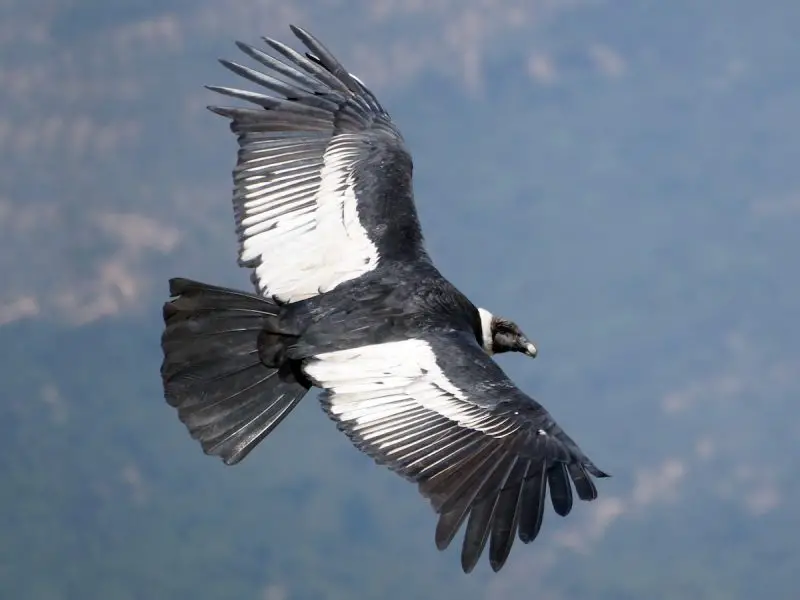
The Andean Condor is one of the largest flying birds in the world, boasting a wingspan that can exceed 10 feet. It has black plumage with white feathers around its neck and on the wings, and males feature a comb-like crest on their heads. Its powerful beak is adapted for tearing flesh.
This majestic bird inhabits the Andes Mountains and coastal cliffs of South America, ranging from Colombia to southern Chile and Argentina. Andean Condors soar at high altitudes, riding thermal air currents to travel vast distances while expending minimal energy.
They are scavengers, feeding mainly on carrion such as dead deer, cattle, or marine animals. A fun fact: the Andean Condor plays an important cultural role in many South American myths and is considered a national symbol in several countries, including Bolivia, Chile, and Colombia.
Angelfish
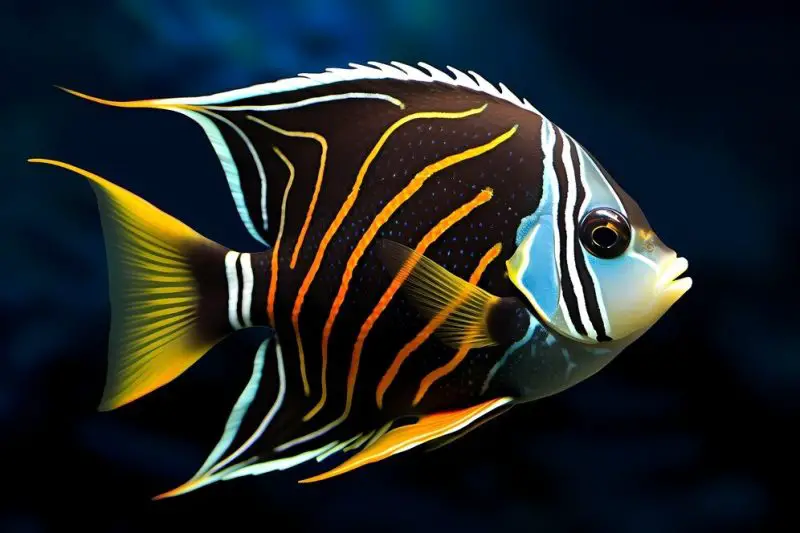
Angelfish are a diverse group of fish known for their striking appearance, graceful movement, and triangular, elongated fins. In saltwater varieties, such as marine angelfish, bright colors and intricate patterns are common, while freshwater angelfish have a more subdued but elegant look with silver bodies and black stripes.
Marine angelfish are commonly found in coral reefs of the Atlantic, Indian, and Pacific Oceans, whereas freshwater angelfish are native to the slow-moving rivers and floodplains of the Amazon Basin. They thrive in warm, clean water with plenty of hiding places.
They are omnivorous, feeding on algae, plankton, small invertebrates, and even smaller fish depending on the species. A fun fact: angelfish are highly territorial and will often defend their space aggressively, especially during breeding periods.
Anglerfish

Anglerfish are deep-sea dwellers famous for their bioluminescent lure, which dangles from a modified fin spine on their heads. This glowing appendage attracts prey in the darkness of the ocean depths. Most anglerfish have large mouths filled with sharp teeth and expandable stomachs to consume prey nearly as large as themselves.
They live at extreme depths of the Atlantic and Antarctic Oceans, often over 3,000 feet below the surface. Their bodies are adapted to cold, high-pressure environments, and they use stealth and their natural light to ambush prey in near-total darkness.
Females are significantly larger than males, and in some species, males fuse permanently to the females in a parasitic reproductive process. A fun fact: the creepy appearance of anglerfish has inspired numerous fictional sea monsters in books and movies.
Ant
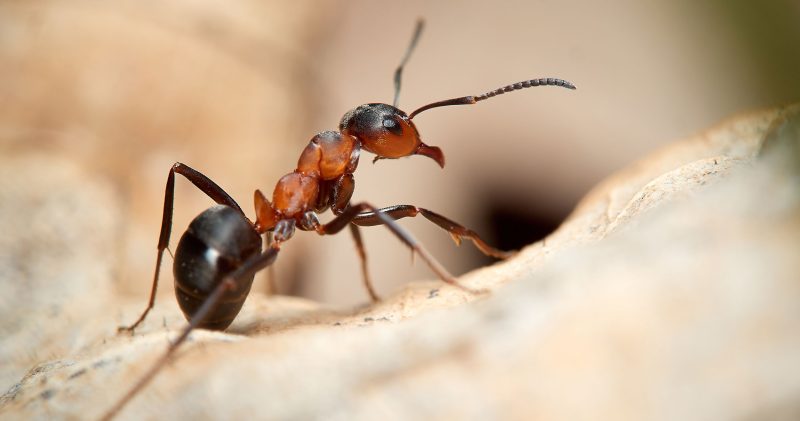
Ants are small, highly social insects known for their complex colony structures and cooperative behavior. They have elbowed antennae, strong jaws, and three distinct body segments. Ants vary in size and color depending on species, but most are under an inch long.
They inhabit nearly every landmass on Earth, thriving in forests, deserts, grasslands, and urban environments. Ants build intricate nests underground, in trees, or within walls, and colonies can range from a few dozen individuals to millions, with specialized roles like workers, soldiers, and a queen.
Ants feed on a wide range of foods including seeds, fungi, nectar, and other insects. A fun fact: some ant species practice farming—leafcutter ants, for example, cultivate fungus on chewed leaves to feed their colony.
Anteater
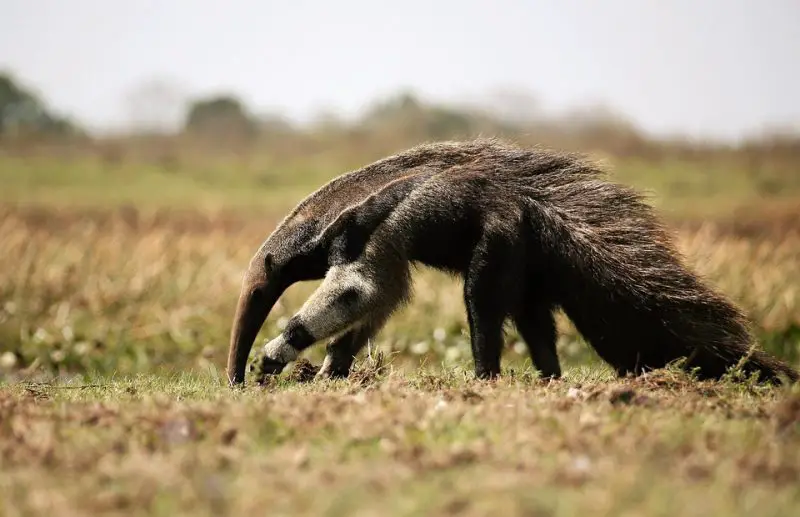
The anteater is a unique mammal best known for its elongated snout and sticky tongue, which can extend over 2 feet to capture ants and termites. It has a thick, shaggy coat and powerful claws used for tearing into insect nests. The most well-known species is the giant anteater, which can grow up to 7 feet long including the tail.
Anteaters are found in Central and South America, ranging from grasslands and tropical forests to savannas. They are mostly solitary and spend much of their time walking slowly with their claws curled under to avoid wearing them down. Despite their name, they do not have teeth and rely entirely on their tongue for feeding.
They feed on thousands of insects daily and have a highly specialized digestive system to process them. A fun fact: anteaters have very poor eyesight but an exceptional sense of smell, which is crucial for locating insect colonies underground or in rotting wood.
Antelope
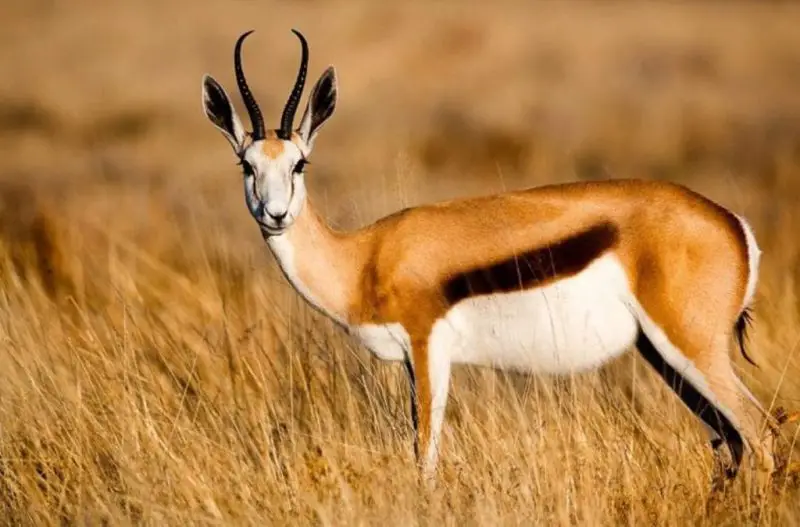
Antelope refers to a diverse group of herbivorous mammals in the Bovidae family, typically characterized by their slender legs, agility, and graceful horns. Their coat color and size vary significantly across species, from the small duiker to the large eland. Many species have striking markings and strong social structures.
They are mostly found in the grasslands, savannas, and woodlands of Africa and parts of Asia. Some, like the Tibetan antelope, even inhabit high-altitude plateaus. Antelopes are highly adapted to their environments and display impressive speed and jumping ability to escape predators.
They are grazers or browsers, feeding on grasses, shrubs, and leaves. A fun fact: some antelope species, such as the springbok, exhibit a behavior called “pronking,” where they leap into the air with stiff legs as a display of strength or to confuse predators.
Aracari
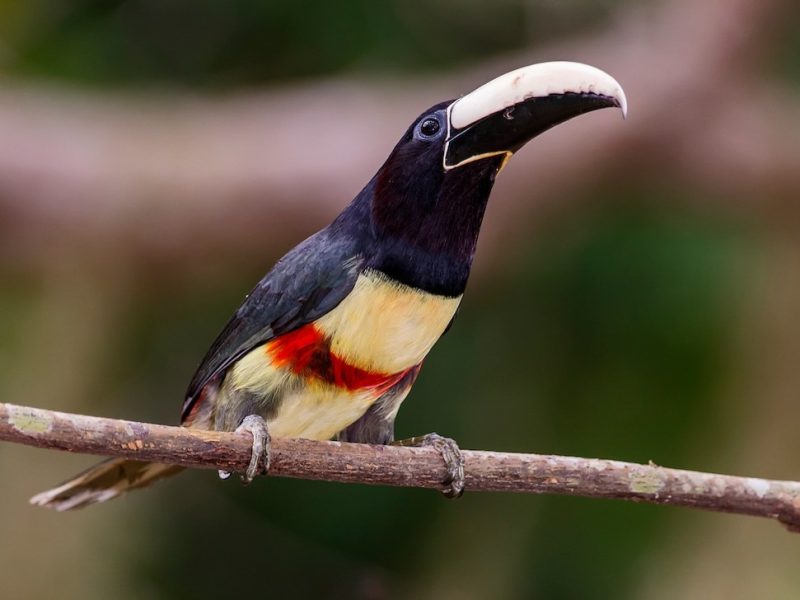
The aracari is a small to medium-sized toucan with a long, colorful beak and vibrant plumage. It belongs to the toucan family and is distinguished by its sleek body, curved bill, and lively red, yellow, green, or black coloration depending on the species. Their beak, although large, is lightweight due to its honeycomb structure.
Aracaris are native to the tropical rainforests of Central and South America, where they dwell in the canopy layer. They are social birds often seen in small flocks, hopping from branch to branch and communicating with high-pitched calls.
Their diet consists primarily of fruits, but they will also eat insects, eggs, and small vertebrates. A fun fact: aracaris are known for their communal roosting habits—up to seven birds may cram into a single tree cavity at night, using their bills and tails to balance.
Arctic Fox
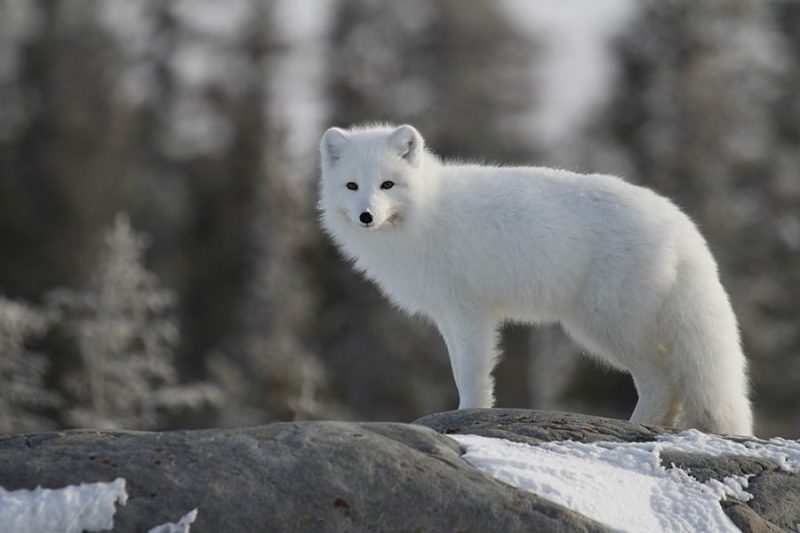
The Arctic Fox is a small, resilient mammal perfectly adapted to life in the cold. It has a compact body, short ears, and a thick, multi-layered fur coat that changes from white in winter to brown or gray in summer for camouflage. Its bushy tail helps conserve heat and is often used as a warm cover while resting.
It lives throughout the Arctic tundra, including northern Canada, Alaska, Greenland, Russia, and Scandinavia. Arctic foxes inhabit dens and are known to travel long distances over sea ice in search of food. They are active year-round and do not hibernate.
They feed on lemmings, birds, fish, and carrion, and are also known to scavenge leftovers from polar bears. A fun fact: the Arctic fox has the warmest fur of any mammal found in the Arctic, and it can survive temperatures as low as −50°C (−58°F).
Arctic Hare
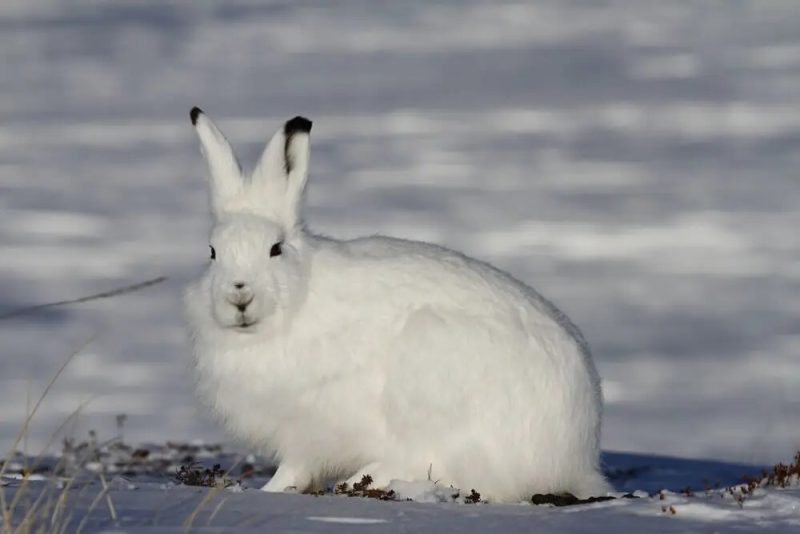
The Arctic Hare is a large species of hare that thrives in the freezing conditions of the northern tundra. It has thick white fur that helps insulate it from the cold and provides camouflage against the snow. During summer, its coat may shift to a grayish-brown to blend with the thawed environment.
These hares are found in the high Arctic regions of Canada and Greenland. They prefer open tundra landscapes and rocky outcrops, where they can use both speed and camouflage to evade predators like foxes and wolves.
They are herbivores, feeding on woody plants, mosses, and lichens during winter, and switch to berries, leaves, and flowers in the warmer months. A fun fact: Arctic hares can reach speeds of up to 40 miles per hour and may travel in large groups for protection during migration.
Arctic Wolf
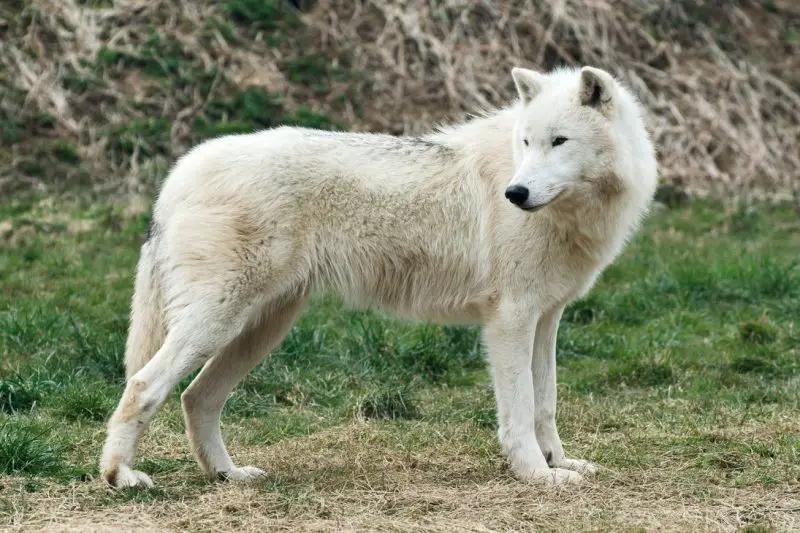
The Arctic Wolf is a subspecies of the gray wolf uniquely adapted to the extreme cold of the Arctic. It has a thick, white coat that provides excellent insulation and camouflage in snowy landscapes. This wolf is slightly smaller than its southern relatives but possesses shorter ears and a more rounded body to retain heat.
It inhabits the high Arctic regions of Canada, Greenland, and parts of Alaska, where temperatures can plummet below −50°C (−58°F). Arctic wolves live in packs and are highly territorial, often roaming across vast expanses of tundra and ice-covered terrain in search of prey.
Their diet primarily includes Arctic hares, caribou, muskoxen, and lemmings. A fun fact: due to the remoteness of their habitat, Arctic wolves rarely encounter humans, and their populations are relatively stable compared to other wolf species.
Armadillo
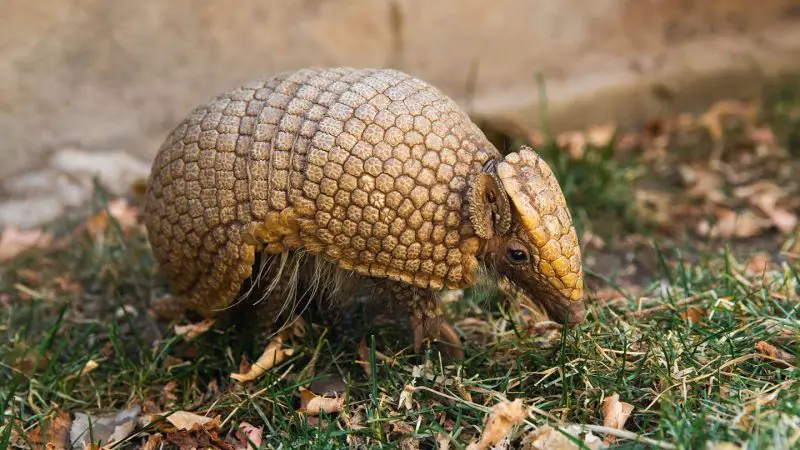
The armadillo is a small mammal known for its armor-like shell made of bony plates. It has a long snout, short legs, and strong claws for digging. The nine-banded armadillo, found primarily in the Americas, is especially notable for its ability to roll into a ball when threatened.
Armadillos are found in a variety of habitats, including grasslands, rainforests, and semi-deserts from the southern United States to South America. They are solitary and nocturnal, spending much of their time digging burrows and foraging at night.
They feed on insects, grubs, and other invertebrates, using their keen sense of smell to locate prey underground. A fun fact: the nine-banded armadillo can hold its breath for up to six minutes and often walks underwater across small streams.
Asian Elephant
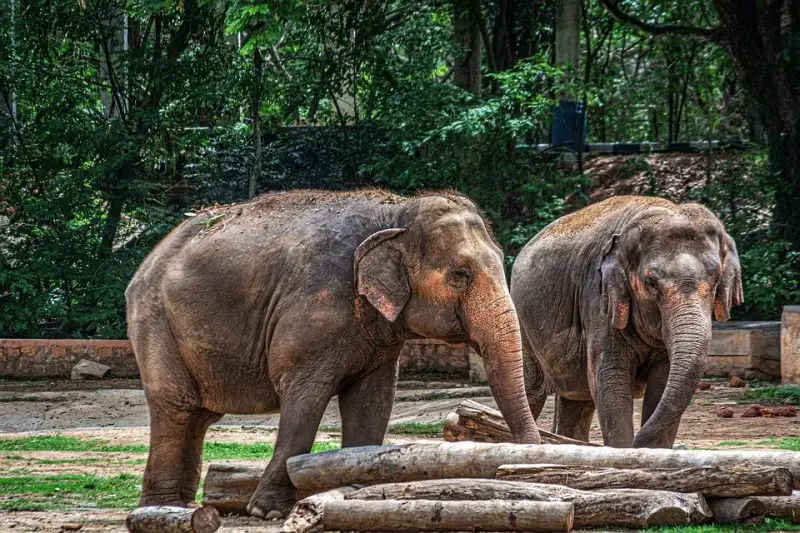
The Asian Elephant is slightly smaller than its African cousin, with smaller ears and a more rounded back. It has a single “finger” on the upper trunk tip, compared to the African elephant’s two. Males often have large tusks, while females may have smaller ones or none at all.
They inhabit forests and grasslands across South and Southeast Asia, including India, Sri Lanka, Thailand, and parts of Indonesia. Asian elephants are highly social and live in matriarchal herds, led by the oldest female.
Their diet includes grasses, bark, fruits, and roots, consuming up to 300 pounds of food per day. A fun fact: Asian elephants have been trained and used by humans for centuries in logging, ceremonial roles, and tourism, showcasing their intelligence and trainability.
Asian Giant Hornet
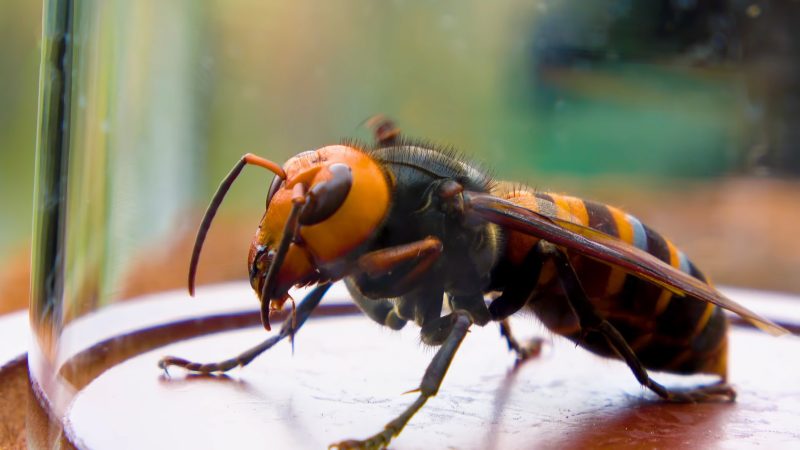
The Asian Giant Hornet is the world’s largest hornet, with queens growing up to 2 inches in length and wingspans of about 3 inches. It has a robust body with orange, black, and yellow markings and a fearsome reputation due to its potent venom and painful sting.
Native to East and Southeast Asia, it typically nests in forested areas, underground, or in tree roots. These hornets are highly territorial and can aggressively defend their nests, especially in late summer and early autumn.
They prey on insects, particularly honeybees, which they can devastate in large numbers. A fun fact: a small group of Asian giant hornets can wipe out an entire bee colony in a matter of hours, earning them the nickname “murder hornets.”
Asian Palm Civet
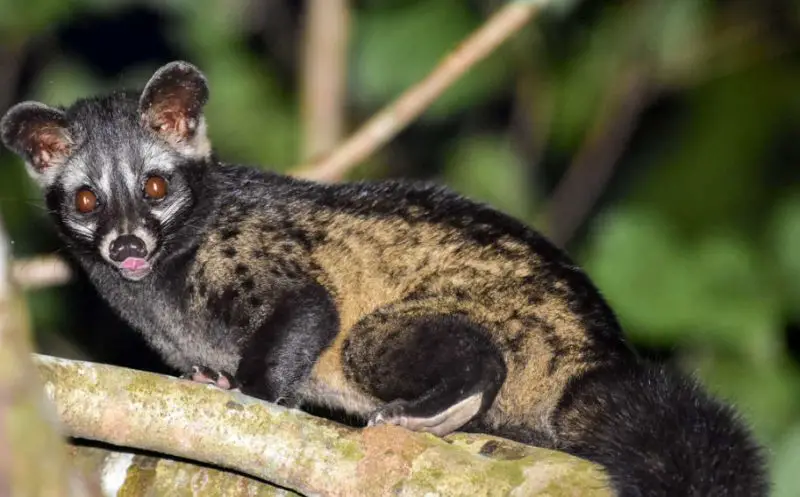
The Asian Palm Civet is a small, cat-like mammal with a slender body, pointed face, and coarse fur. It has dark markings on the face and often a ringed tail. Though nocturnal and elusive, it plays a vital role in forest ecology by dispersing seeds from consumed fruits.
This civet is found across South and Southeast Asia, including India, Indonesia, and the Philippines. It prefers tropical forests, plantations, and even urban areas, adapting well to different environments as long as food is plentiful.
Its diet includes fruits, insects, and small animals, but it’s most famous for eating coffee cherries. A fun fact: the beans from these cherries, passed through the civet’s digestive system, are used to make the expensive and controversial kopi luwak coffee.
Read More:


